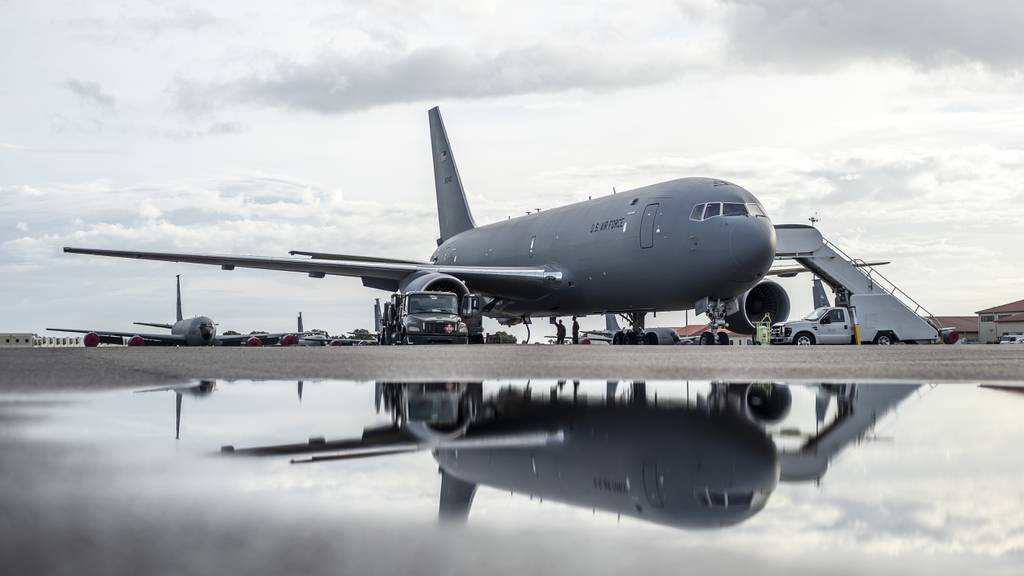
The Pentagon’s fast-track pathway for buying equipment often doesn’t move any faster than the normal process, according to a new report from the government’s watchdog agency.
The Government Accountability Office unveiled its annual report on the Defense Department’s buying practices, covering many of the largest items in the military’s shopping cart, from aircraft carriers to intercontinental ballistic missiles.
GAO studied more than 30 of the most expensive items on order, costing a little more than $1 trillion. The total cost of those fell by about $1.7 billion since the year before, due to changes in inflation and a drop in purchases.
Still, several of these big-ticket items are running above the contracted price. The estimated total may rise, the report warned, plus there are issues with speed.
For the largest weapons programs still awaiting delivery, it’s taking 10 years for the Pentagon to place an order and then receive the system. That’s longer than the average noted last year.
But for programs that have started delivering, the delays are even longer. The average time, the authors found, rose from 8 years to 11 years.
Alongside these major programs, GAO also studied some meant to be smaller and more nimble. These “middle-tier acquisitions,” or MTA, work like a toll road alongside a highway — a quicker route for weapons that the Pentagon needs more urgently.
The trouble is that the speed limit isn’t much faster, the report found.
“Although the MTA pathway was designed for speed, GAO found most MTA programs do not plan to implement leading practices to facilitate that speed,” it said.
These programs are meant to reach the field within five years, according to the Pentagon’s own guidance. However, GAO found some middle-tier programs are still following a “linear” process: five years for prototyping and another five for development.
“While the MTA pathway offers flexibilities to create efficiencies in the acquisition process, the warfighter may continue to wait years — if not more than a decade — for a solution that may ultimately no longer be relevant,” according to the report.
One of the core problems the Pentagon faces as it tries to buy weapons moving forward is purchasing software. Weapons, like technology more broadly, depend more on the lines of code that make them work. To avoid going obsolete, that software must stay up to date.
But the DOD struggles to buy this evergreen technology, and one of the reasons listed in the report is employees. The department doesn’t have enough people who understand software, the report argued. Instead, many of the most software-intense programs in the Pentagon require the expertise of contractors.
“DOD has taken initial steps to establish a cadre of personnel with software expertise, but its efforts are in early stages,” the report said. “While DOD expects to request more funding, as of March 2024, the cadre consisted of one federal employee with limited assistance.”
GAO offered three main recommendations: strategies to make MTA programs move faster, clearer guidance on the Pentagon’s software workforce, and the funding and goals needed for that workforce.
The top deputy for Pentagon acquisition and sustainment, who has since moved to a policy role, partially agreed with the recommendations and said some may be included in the DOD’s next update to its buying practices, expected this month.
Noah Robertson is the Pentagon reporter at Defense News. He previously covered national security for the Christian Science Monitor. He holds a bachelor’s degree in English and government from the College of William & Mary in his hometown of Williamsburg, Virginia.
- SEO Powered Content & PR Distribution. Get Amplified Today.
- PlatoData.Network Vertical Generative Ai. Empower Yourself. Access Here.
- PlatoAiStream. Web3 Intelligence. Knowledge Amplified. Access Here.
- PlatoESG. Carbon, CleanTech, Energy, Environment, Solar, Waste Management. Access Here.
- PlatoHealth. Biotech and Clinical Trials Intelligence. Access Here.
- Source: https://www.defensenews.com/pentagon/2024/06/17/pentagons-contracting-speed-lane-sometimes-no-faster-says-watchdog/



